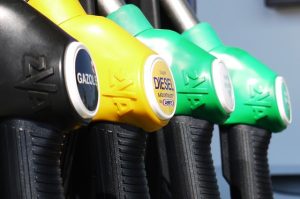 Every time you roll up to the gas station, you probably notice there are several gasoline choices for your car. Most often, you’ll see regular, mid-grade, and premium, although several other ethanol/gasoline mixes are becoming more popular. The problem with these options is that few people know the difference between the grades of gas and aren’t aware of which is right for their car. To make matters easier, here’s a guide that will teach you everything you need to know about gas grades and which one is right for you.
Every time you roll up to the gas station, you probably notice there are several gasoline choices for your car. Most often, you’ll see regular, mid-grade, and premium, although several other ethanol/gasoline mixes are becoming more popular. The problem with these options is that few people know the difference between the grades of gas and aren’t aware of which is right for their car. To make matters easier, here’s a guide that will teach you everything you need to know about gas grades and which one is right for you.
Regular
Regular fuel, also known as 87 octane, is by far the most consumed gasoline grade in the United States. Before diving into this type of gas, you should know what the octane rating means. Very simply, this numerical rating measures a fuel’s ability to resist engine knock, which is the product of improper combustion within the engine. The higher the number, the more impervious the engine is to misfiring.
Because most cars newer cars don’t have a problem with engine knock, regular gasoline is the cheapest way to fuel your car. In fact, most owner’s manuals suggest regular as the preferred gasoline, as any higher octane levels don’t truly make a difference to your vehicle’s performance.
Mid-Grade
Drivers used more than 12 billion gallons of gas in 2005, yet only 7 percent of this fuel was mid-grade, or 88, 89, or 90 octane. With that said, it’s hard to find an exact reason to use this fuel. Only a handful of cars need mid-grade fuel, and most of these vehicles had a high-displacement eight-cylinder engine.
Most users of mid-grade fuel are making a trade-off. If your owner’s manual suggests premium gas, you can probably get away with using mid-grade. While you may lose a bit of power or performance when driving, you also stand to save hundreds of dollars at the pump each year. Unless you’re a gearhead or a hardcore performance enthusiast, you probably won’t even notice the difference.
Premium
One of the most common misconceptions about premium gasoline, or 91 and 92 octane, is that it provides a boost to performance or cleans your engine. Both of these aspects are erroneous. If you have a car that requires mid-grade or regular fuel, putting premium in the tank doesn’t do anything more than waste money at the pump.
However, cars that require premium fuel demand it for a reason, and putting in anything but premium can have catastrophic consequences. When you put nonpremium gasoline into a vehicle that requires premium-grade fuel, you’ll experience a significant loss in performance. The most obvious sign will be that your car won’t accelerate as quickly as it normally does. You may also notice the car shaking or vibrating when idling, as well as hesitating when switching gears. You’ll also lose fuel efficiency, which negates the purchase of a cheaper grade of gasoline. When required, don’t fill your car with anything less than premium.
The next time you’re at the pump, use this guide as a valuable resource to help you adopt better gas-buying habits. Your bank account and your car will both thank you.
Image Via Pixabay



